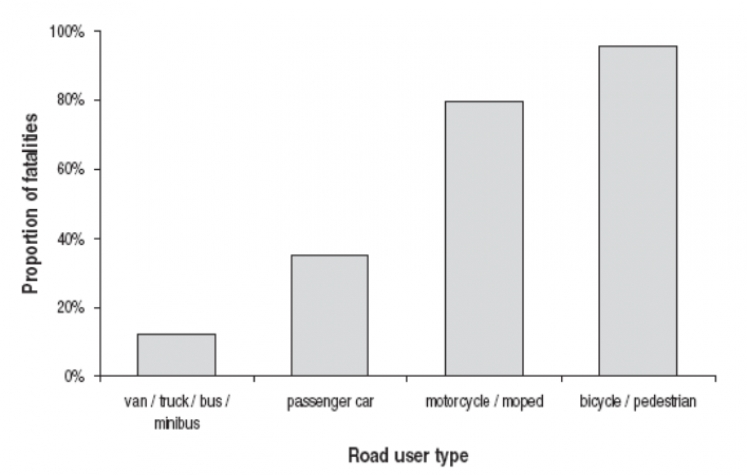
Objective: In this article the factors affecting fatality and injury risk of road users involved in fatal accidents are analyzed by means of in-depth accident investigation data, with emphasis on parameters not extensively explored in previous research. Methods: A fatal accident investigation (FAI) database is used, which includes intermediate-level in-depth data for a harmonized representative sample of 1300 fatal accidents in 7 European countries. The FAI database offers improved potential for analysis, because it includes information on a number of variables that are seldom available, complete, or accurately recorded in road accident databases. However, the fact that only fatal accidents are examined requires for methodological adjustments, namely, the correction for two types of effects on a road user’s baseline risk: “accident size” effects, and “relative vulnerability” effects. Fatality and injury risk can be then modeled through multilevel logistic regression models, which account for the hierarchical dependences of the road accident process. Results: The results show that the baseline fatality risk of road users involved in fatal accidents decreases with accident size and increases with the vulnerability of the road user. On the contrary, accident size increases nonfatal injury risk of road users involved in fatal accidents. Other significant effects on fatality and injury risk in fatal accidents include road user age, vehicle type, speed limit, the chain of accident events, vehicle maneuver, and safety equipment. In particular, the presence and use of safety equipment such as seat belt, antilock braking system (ABS), and electronic stability program (ESP) are protection factors for car occupants, especially for those seated at the front seats. Conclusions: Although ABS and ESP systems are typically associated with positive effects on accident occurrence, the results of this research revealed significant related effects on accident severity as well. Moreover, accident consequences are more severe when the most harmful event of the accident occurs later within the accident chain.
| ID | pj44 |
| Manuscript | |
| DOI | |
| Tags | accident analysis, driver behaviour, international comparisons |







